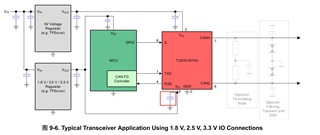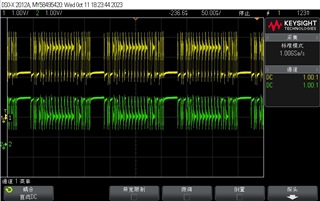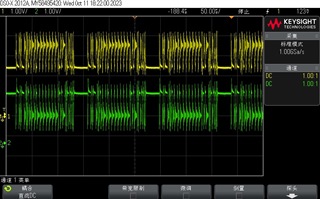Other Parts Discussed in Thread: TCAN1462-Q1
Customer found some device is failure in high voltage environment.
Is there any protect structure in device to avoid high voltage failure?
What't should customer do to avoid this problem?
This thread has been locked.
If you have a related question, please click the "Ask a related question" button in the top right corner. The newly created question will be automatically linked to this question.
Customer found some device is failure in high voltage environment.
Is there any protect structure in device to avoid high voltage failure?
What't should customer do to avoid this problem?
Minghao,
What kind of failure and high voltage environment do you mean?
The TCAN1057A-Q1, along with other devices that TI produces, have absolute maximum conditions that need to be maintained in order to ensure that the device you're using continues to operate properly. These may be supplemented by ESD ratings or additional transient protections. This information is provided in the data sheet.
Operation outside of the absolute maximum ratings can reduce the lifetime of the component or can even catastrophically damage the component.
For the device to operate, it should be kept within the recommended operating conditions.
Best,
Danny
Is there any over voltage protect in device?
Customer product Vbus might over voltage in some situation.
Is there any design reference for over voltage protect?
Minghao,
Thanks for the additional information.
The TCAN1057A-Q1 has undervoltage protection, but it does not have an overvoltage threshold or overvoltage protection built in aside from the included ESD protection circuitry. The protection features for this device include CAN bus current limiting and thermal shutdown, but not an OVSUP behavior.
Best,
Danny
Danny,
Thanks for your support about OVP. Customer don't have any problem about that.
But there are some other problem customer feedback to me.
1.Our device peforence well in 500KHz, while there ia some bit error when the device works in 1MHz.
2.Customer connect 4pcs TCAN1057 in parallel with a computer host communication module. They need to change the sampling timing otherwise the board is unable to establish connection with computer. But they test TJA1057 from NXP, the problem isn't exist.
3.Customer use 4pcs in their board in parallel and they works ok. But if this board connect with other board they can't establish connection.

This is their block diagram and schematic. Do you have any advise to them?
Minghao,
Could you have them try and measure the impedance/resistance between CANH and CANL when the bus is assembled? CAN transceivers are expected to transmit/communicate across a nominally 60 Ω differential impedance, so I want to make sure that it's at least above 50 Ω. Can you confirm that the 120 Ω resistor R39 is only present on one board and that only one other board (maybe host module) has the additional 120 Ω termination?
An image of the waveform (CANH and CANL) would be very helpful for us to diagnose what's going on. The TCAN1057A-Q1 is not a digital device, so it is best for us to look at the analog signals so that we can diagnose what's going on.
Best,
Danny
Hi Danny,
For the termination resistor, I will recommend customer to have a test.
And following is waveform. The first photo is TI TCAN1057 waveform.

The second is NXP TJA1057 waveform.

Minghao,
It looks to me that there is a significant ringing problem on their network. Try zooming in a bit on one of the bits - I would imagine that the VOD does not settle until very far into the bit. This is the case for both images you showed (NXP and TI).
If your customer has a very messy network that causes unreliable communication for the TJA1057 and TCAN1057A-Q1, I would consider using the TCAN1462-Q1 signal improvement capable (SIC) transceiver, which can help with ringing on the dominant-to-recessive edge of the signal, which is where ringing is usually the most impactful.
I also look forward to the differential resistance/impedance answer while your customer investigates. Let me know once you hear back.
Best,
Danny